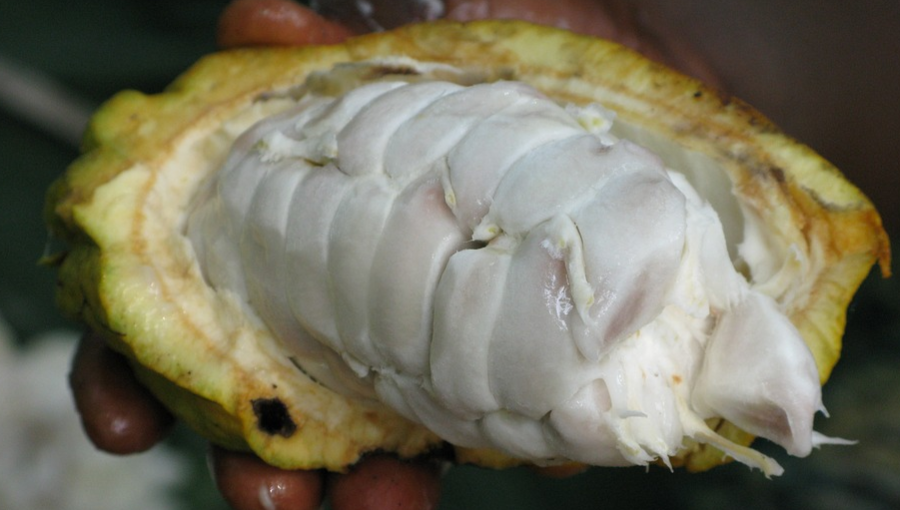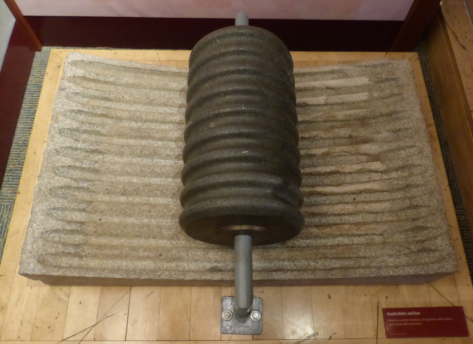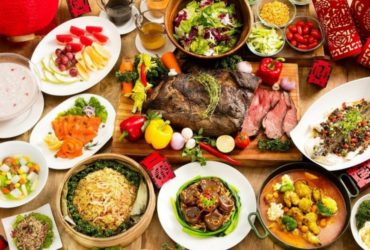BY: NORA IDRINA
Chocolate has always been important one way or another, serving various purposes at different points in history and geography. In modern times, one of its most instantly recognizable uses is in romance where it plays a pivotal role in gift giving on Valentine’s day. Or, if you’re like me and you’d rather not share your chocolate with others, then it’s purely for your own enjoyment.
The consumption of chocolate for pleasure is a historical constant. From the earliest recorded use of chocolate in Mesoamerica to its worldwide usage today, we eat chocolate simply because we like how it tastes. That said, pleasure wasn’t always the only factor driving chocolate consumption: for Mesoamerican tribes like the Mayan and Aztec peoples, chocolate or cacao also played important roles in religious ceremonies and in commerce.
Chocolate in Mesoamerica
To the Mesoamericans, cacao was recognized as the ‘Food of the Gods’ and held in reverence for its perceived divine properties. As such, it was deemed a necessity for important religious events like births, weddings, deaths, and even the occasional human sacrifice (1). In commerce, cacao was used to pay taxes and to pay for goods. According to 16th century Aztec documents, 1 cocoa bean would get you a tamale, ten equals a rabbit and a 100 would get you a good turkey hen (1),(2).
Early chocolate consumption is worlds apart from the way we enjoy it today. For much of the 2000 years we’ve been enjoying chocolate, most of it was spent drinking chocolate rather than eating it. To the Mesoamericans, chocolate was best served as a thick, frothy, bitter, spicy drink. To produce Mesoamerican chocolate, cocoa beans were first harvested from their pods, then fermented and dried, followed by roasting, then grinding. The ground-up beans would be mixed with water and cornmeal and flavoured with chilli peppers (2).
The resulting “bitter water” is undoubtedly a far cry from the way we like our chocolate today. It’s unlikely it would be very popular now, and to the Spanish conquistadors that arrived in the Aztec homeland in 1519 AD, the chocolate served to them was little more than “a bitter drink for pigs”. Consequently, they had very little appreciation for chocolate until they figured out that heating and sweetening it vastly improved its palatability (3).

Frothy, thick chocolate (Pixabay)
Chocolate spreads throughout Europe
Following that discovery was a huge boom in chocolate popularity, first in Spain where the sweet, hot chocolate was enjoyed by nobility and clergymen alike for rumoured health benefits (3). Eventually, chocolate spread to the rest of Europe via sharing within both religious and aristocratic circles; with a bit of help from Jewish traders travelling to the Netherlands (4). Chocolate eventually appeared in Great Britain sometime in the 1600s, and with it came: a) dubious claims of health and cosmetic benefits, and b), the formation of chocolate houses, which are essentially old-timey versions of Starbucks for chocolate where those that could afford to would drink chocolate flavoured with exotic spices (5).
By the mid-1600s chocolate was hugely popular throughout Europe. Consequently, the supply of manually-produced chocolate from Mesoamerican plantations couldn’t always keep up with enormous European demand. So by the 1800s, during the industrial revolution, several processes were designed in hopes of speeding up production. This is the point in history that marks the beginning of the modern era of chocolate, in which chocolate transforms from a well-loved drink to an equally adored confection (6).
In 1815, Coenraad van Houten revolutionized the chocolate industry by inventing the chocolate press: a machine used to separate fat within cocoa (cocoa butter) from cocoa solids. The result of this innovation was cheaper production and more consistency in chocolate quality (6). Later on, thanks to van Houten’s ingenuity, an English chocolatier named Joseph Fry figured out how to make the first edible chocolate by mixing together cocoa powder, sugar, and melted cocoa butter, and then moulding the resulting paste into the first chocolate bar (6).

Early edible chocolate (Wikimedia)
Chocolate meets Valentines day
With the advent of “eating chocolates” came the marriage of chocolate and Valentine’s day. Sometime around the 1830s, chocolatier Richard Cadbury figured out how to capitalize on the Victorians’ penchant for cupid themed gifts for Valentine’s. Much like Fry, he made his own “eating chocolates” by mixing excess cocoa butter with chocolate and then arranging the finished chocolates into Cupid-themed boxes of his own design. The chocolate boxes made great gifts for couples who would share the sweet treats and then use the pretty boxes for storing other romantic tokens (7).
Chocolate has come a long way since it was first discovered in Mesoamerica. We’ve gone from enjoying it as a nutritious fermented beverage, to eating it as chocolate bars, to serving it in ice creams, cakes, and a whole lot of other kinds of confections. However, even with the staggering variety of ways we consume chocolate today, the process of turning cocoa into chocolate hasn’t really changed all that much. While there are region-specific variations in procedure, it’s more or less the same steps at the end of the day.
Harvesting cocoa pods
The very first step in making chocolate is to harvest pods. Ripe pods are cut off the tree and gathered into heaps. The piled up pods are cut open, exposing cocoa beans nestled within a sugary pulp. The insides of the pods are scooped out and placed in wooden crates lined with banana leaves, where they are left to sit and ferment for about a week (8). The fermentation step is said to be what makes or breaks the flavour of chocolate – (9).
Fermenting cocoa beans
When the insides of the pods are scooped out, the cocoa beans are left encased within the sugary pulp. While conditions within the pod are sterile, once the beans and the pulp are exposed to the outside environment, they’re also exposed to a host of fermenting microorganisms either naturally present in the fermentary or introduced by fruit flies (10). At the start of fermentation, yeasts ferment the sugars in the pulp into ethanol. Both acetic-acid and lactic-acid bacteria then oxidize ethanol to acetic acid and lactic acid respectively (11).

Exposed cocoa pulp (Pixabay)
The acetic-acid bacteria convert ethanol to acetic acid and then to carbon dioxide and water. This process releases heat and raises the temperature of the fermenting mass, causing the pulp to break down and drain away from the beans. As the pulp drains away, conditions grow increasingly aerobic. Since lactic-acid bacteria operates under anaerobic conditions, the production of lactic acid is halted (11).
Acetic-acid fermentation continues unaffected resulting in the maintenance of high temperatures. As a result, more pulp drains away, more fermentation can occur, and more acetic acid is formed. Over time, the built-up acid and high temperatures kill the cocoa beans, destroying cell walls and allowing previously separated materials inside and outside the bean to mix. At this point in fermentation, chemical changes like enzyme activity, oxidation, and the breakdown of protein into amino acids take place resulting in the formation of the characteristic chocolate colours and flavours (11).

Left: Raw, pale unfermented cocoa beans encased within pulp (Pixabay) Right: Fermented cocoa beans (Pixabay)
Chocolate produced from different plantations rarely ever tastes the same due to different methods of fermentation. Some plantations turn the beans over as they ferment to induce more aeration and thus, generate more flavour within the cocoa beans. Chocolate produced by Danish chocolatier Friis Holm for example, uses the same recipe and beans of the same origin. The only variation is the number of times beans are turned. The result of the extra aeration in beans turned twice are floral peach notes while triple-turned beans have a stronger citrus flavour (12).
Drying fermented cocoa beans
After fermentation comes the drying step during which the moisture content of the beans are reduced from 60% to 7.5%. In parts of the world that are typically dry and sunny year round, the beans are spread out in a single layer and sun-dried (8). In other, wetter places, artificial convection dryers and fans are used instead. In either case, the beans are agitated to ensure even drying. Regardless of the type of dryer used, drying has to be done carefully and slowly enough that the chemical process set in motion by the fermentation step can continue to develop more desirable flavours but fast enough to prevent the formation of moulds and off-flavours (11).

Laying out fermented cocoa beans to dry (Pixabay)
Roasting cocoa beans
Once dried, the beans are packed up and sent to chocolate makers for roasting. Roasting the beans helps to kill off microorganisms and drive off the vinegary smell and taste of acetic acid leftover from fermentation. The high temperatures also helps to reduce astringency by converting tannins to flavourless substances called phlobaphenes. This results in smoother-tasting chocolate. Finally, to add to the complexity of the chocolate flavour profile, we have the Maillard reaction to thank – the reaction between sugars and proteins in the presence of dry heat produces rich brown colours and flavours (13).
After roasting, the hard, thin skin of the beans are ready to be cracked open, breaking the beans down into smaller pieces known as cocoa nibs. The nibs are then ground up between stone rollers, forming cocoa mass: a paste consisting of cocoa butter and cocoa solids (8). At this stage, the chocolate formed is gritty and unpalatable. To improve texture and flavour, the chocolate mass undergoes conching – a process of mixing chocolate and added ingredients (sugar, cocoa butter, soy lecithin, flavouring) while heating for several hours (8).
Conching the chocolate
Conching is done using a conche-shaped machine called a, not surprisingly, conche. The conche agitates and mixes the chocolate, evenly distributing cocoa butter throughout the chocolate mass. In the early phases of conching, the chocolate mass is in the dry phase, wherein mixing coats dry cocoa solids and added ingredients with cocoa butter. Air moves throughout the conche, removing moisture and volatile acids which adds to the viscosity of chocolate (and in doing so provides better texture) and improves chocolate flavour by getting rid of any unpleasant sour notes left behind by excess acids. The elevated temperature of conching also helps a lot in developing flavour by further promoting the Maillard reaction (14).

Chocolate conche roller and base (Wikimedia)
Conching has such a significant effect on chocolate texture and flavour that chocolate quality is dependent on the length of time conching is done. For your average chocolate bar, conching is done for roughly 6-7 hours but for high quality chocolate, conching has to be done for 40-70 hours (8). Once conched, the chocolate can be tempered and moulded before it is finally wrapped up and ready to be
In the food world, it’s hard to pinpoint any other foodstuff that is as well-loved as chocolate. From its Mesoamerican roots to its significance on Valentine’s day, chocolate is enjoyed so universally that for the most part, we haven’t significantly changed the way we make it from cocoa. But that certainly doesn’t mean we haven’t tried – innovations like milk chocolate and white chocolate and even the more recently introduced ruby chocolate are all testament that our love for chocolate has stood the test of time.
References:
- https://www.smithsonianmag.com/arts-culture/a-brief-history-of-chocolate-21860917/
- https://www.godivachocolates.co.uk/the-history-of-chocolate-mayans-aztecs.html
- https://www.godivachocolates.co.uk/the-history-of-chocolate-europe.html
- http://time.com/4693048/chocolate-history-museum/
- https://www.historyextra.com/period/stuart/a-brief-history-of-how-we-fell-in-love-with-caffeine-and-chocolate/
- http://www.exploratorium.edu/exploring/exploring_chocolate/
- https://www.smithsonianmag.com/smithsonian-institution/how-chocolate-and-valentines-day-mated-life-180954228/
- Couture Chocolate: A Masterclass in Chocolate by William Curley
- https://waset.org/publications/10003295/color-characteristics-of-dried-cocoa-using-shallow-box-fermentation-technique
- https://books.google.com.my/books?hl=en&lr=&id=urs9QCMKOw4C&oi=fnd&pg=PR5&dq=cocoa&ots=3LuTfIRaHU&sig=oxsdfo_snbwWIh6TkcDdUgQ7mK0&redir_esc=y#v=snippet&q=from%20harvest%20to%20store&f=false
- https://www.icco.org/faq/59-fermentation-a-drying/132-how-does-the-fermentation-process-work-on-the-cocoa-bean-and-how-long-does-it-take.html
- https://www.icco.org/faq/59-fermentation-a-drying/110-drying-cocoa-beans.html
- http://www.amanochocolate.com/blog/flavor-development-in-chocolate/
- https://books.google.com.au/books?id=A1CkAgAAQBAJ&pg=PR4&lpg=PR4&dq=ISBN+978-1-84569-390-9&source=bl&ots=p93PcyFQBi&sig=ACfU3U3gpKnxc4NQRmgVdc9e97ECe1j96g&hl=en&sa=X&ved=2ahUKEwiIu6rq26bgAhXCZCsKHdyeC3AQ6AEwAXoECAcQAQ#v=onepage&q=ISBN%20978-1-84569-390-9&f=false






Leave a Reply